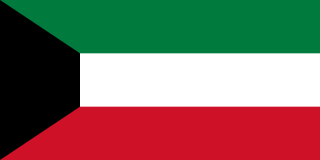
The Arabian Peninsula, or Arabia, is a peninsula in West Asia, situated northeast of Africa on the Arabian Plate. At 3,237,500 km2 (1,250,000 sq mi), comparable in size to India, the Arabian Peninsula is the largest peninsula in the world.

The Arab world, formally the Arab homeland, also known as the Arab nation, the Arabsphere, or the Arab states, comprises a large group of countries, mainly located in Western Asia and Northern Africa. While the majority of people in the Arab world are ethnically Arab, there are also significant populations of other ethnic groups such as Berbers, Kurds, Somalis and Nubians, among other groups. Arabic is used as the lingua franca throughout the Arab world.

West Asia, also called Western Asia or Southwest Asia, is the westernmost region of Asia. As defined by most academics, UN bodies and other institutions, the subregion consists of Anatolia, the Arabian Peninsula, Iran, Mesopotamia, the Armenian highlands, the Levant, the island of Cyprus, the Sinai Peninsula and the South Caucasus. The region is separated from Africa by the Isthmus of Suez in Egypt, and separated from Europe by the waterways of the Turkish Straits and the watershed of the Greater Caucasus. Central Asia lies to its northeast, while South Asia lies to its east. Twelve seas surround the region (clockwise): the Aegean Sea, the Sea of Marmara, the Black Sea, the Caspian Sea, the Persian Gulf, the Gulf of Oman, the Arabian Sea, the Gulf of Aden, the Red Sea, the Gulf of Aqaba, the Gulf of Suez, and the Mediterranean Sea. West Asia contains the majority of the similarly defined Middle East, but excludes most of Egypt and the northwestern part of Turkey, and includes the southern part of the Caucasus.
Talcott Williams Seelye was a United States Foreign Service Officer, United States Ambassador, author, and commentator.

The Middle East and North Africa (MENA), also referred to as West Asia and North Africa (WANA) or South West Asia and North Africa (SWANA), is a geographic region. While still referring to most of the Middle East and North Africa together, it is widely considered to be a more defined and apolitical alternative to the grouping of countries that is known as the Greater Middle East, which comprises the bulk of the Muslim world.

The 1964 Arab League summit was the first summit of the Arab League, held in Cairo, Egypt, on 13–16 January 1964 and attended by all fourteen of the then member states: United Arab Republic (Egypt), Iraq, Lebanon, State of Palestine, Syria, Saudi Arabia, Jordan, Yemen Arab Republic, Libya, Sudan, Morocco, Tunisia, Kuwait and Algeria.
The Demographics of the Middle East describes populations of the Middle East, a region covering western and northern parts of the Asian and African continents respectively.

This is a list of the competitive matches played by the Syrian football team since its inception.

Eublemma is a genus of moths of the family Erebidae described by Jacob Hübner in 1829.
This article includes the Bahrain national football team results since its beginnings.
This article provides details of international football games played by the Qatar national football team from 2000 to 2019.
The Arab Cold War was a political rivalry in the Arab world from the early 1950s to the late 1970s, as part of the wider Cold War. It is generally accepted that the beginning of the Arab Cold War is marked by the Egyptian revolution of 1952, which eventually led to Gamal Abdel Nasser becoming president of Egypt in 1956. Thereafter, newly formed Arab republics, defined by revolutionary secular nationalism and inspired by Nasser's Egypt, engaged in political rivalries with conservative traditionalist Arab monarchies, led by Saudi Arabia. The Iranian Revolution of 1979 is widely seen as the end of this period of internal conflict and rivalry. Ayatollah Ruhollah Khomeini was installed as the leader of Iran's theocratic government. A new era of Arab-Iranian tensions followed, overshadowing the bitterness of intra-Arab strife.

Iran and Saudi Arabia are engaged in an ongoing struggle for influence in the Middle East and other regions of the Muslim world. The two countries have provided varying degrees of support to opposing sides in nearby conflicts, including the civil wars in Syria and Yemen; and disputes in Bahrain, Lebanon, Qatar, and Iraq. The struggle also extends to disputes or broader competition in other countries globally including in West, North and East Africa, South, Central, Southeast Asia, the Balkans, and the Caucasus.

This is a list of official football games played by Saudi Arabia national football team between 2010 and 2019.

This is a list of official football games played by Saudi Arabia national football team between 2000 and 2009.

This is a list of the Iraq national football team results from 2010 to 2019.

This article provides details of international football games played by the Kuwait national football team from 2010 to 2019.












